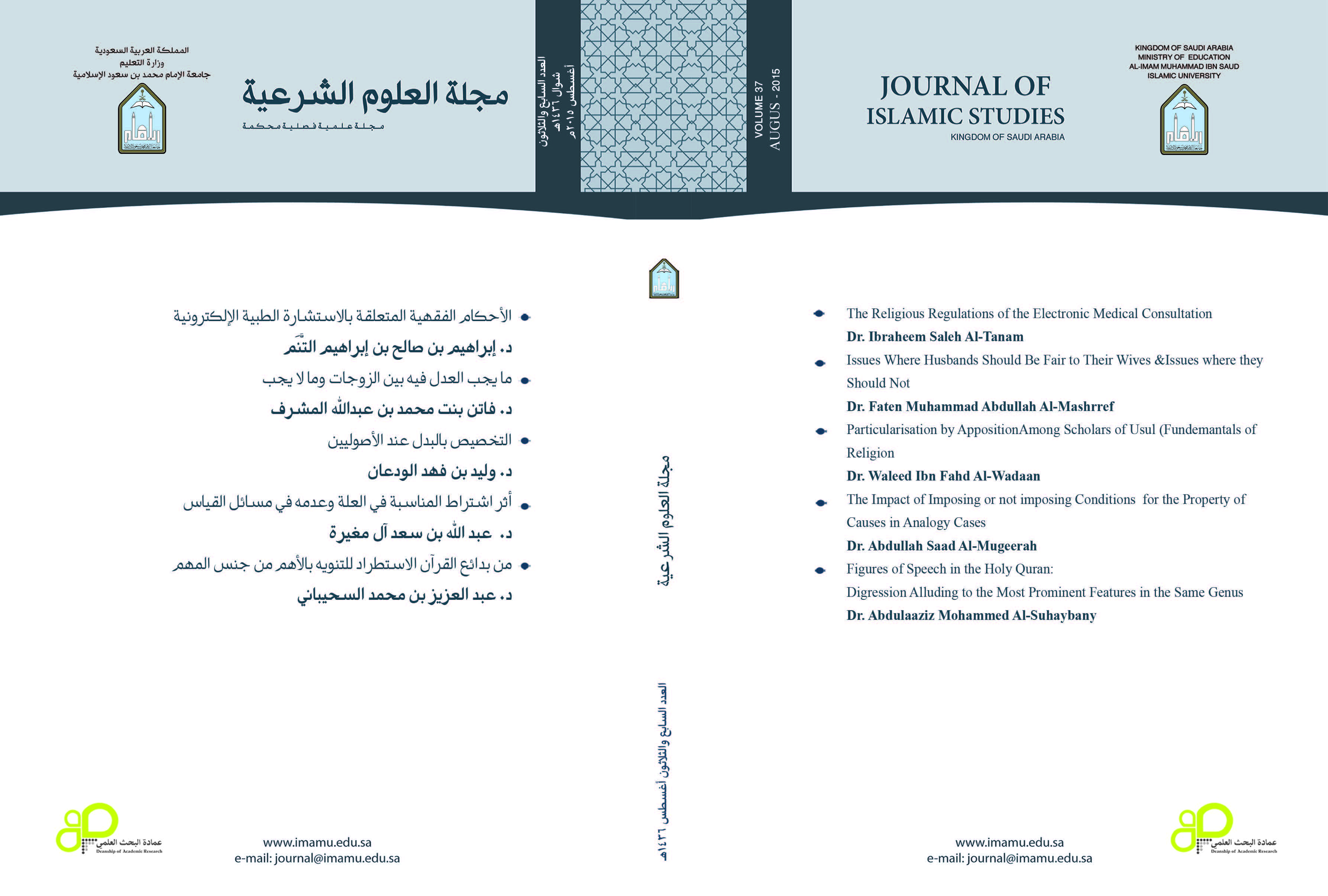Figures of Speech in the Holy Quran: Digression Alluding to the Most Prominent Features in the Same Genus
Abstract
This research study aimed to investigate one of the figures of speech in the Holy Quran with prime examples of a particular type that nobody has ever discussed or cited before. This study uncovers one of the consistencies among the verse and the sentences. Digression as defined by researchers and scholars of the Holy Quran is one of the figures of speech and unique subtleties. In terms of language, digression is to depart something for the sake of something else but much related to it then goes back to the first path of the discourse or meaning.
Digression falls into various types. I have investigated six types, and the most important one is the sixth type of digression. Therefore, I believe that this type of digression is new in its nature and kind.
There are three types of figures of speech that look very much like digression. They are: appropriate textual departure, textual parenthesis and textual conflation. The difference among these three types and digression was made clear.
It was clear for me that researchers who paid much attention to digression were seven people: Al-Zamakhshary, Abo Hayyan, Ano Al-Saud, Shehab Al-Deen Al-Khafagy, Al-Alousy, Mohammed Ezza Darouza and Al-Taher Ibn Aashoor. The people among those who paid much attention to digression were Al-Alousy, Mohammed Ezza Darouza and Al-Taher Ibn Aashoor. I drew on 14 citations from the Holy Quran, which refer to a possibly new kind of digression. I therefore called it "Digression alluding to the most prominent features in the same genus in the Holy Quran".




